In light of the government directive encouraging everyone to work remotely in order to slow the spread of coronavirus, we asked 1000 business leaders in the communications sector, what the biggest challenge was when working from home.
25% of respondents said they felt demotivated and lack lustre without the stimuli of office life. One in five find it hard to make a boundary between home and work life and had difficulties in switching off.
10% flagged the challenge of juggling the needs of children at home whilst keeping a focus on work. Clearly this may well increase as a concern and challenge, following the closure of schools from end of day today (Friday 20th March).
Those that had previous experience of WFH seem very comfortable with the new status quo with fellow team members now also working remotely. Below we share some of the challenges and 21 of the top tips offered up by respondents, that may help you and your teams as we all adjust.
Challenges:
“Voice calls are helping with this, but they are a lot more time consuming.” – MD, PR Agency
“Lack of people to talk to!” – Director, M&A Consultancy
“Working from home with my small children also at home. Managing my time, their time, and giving time to my team, especially those who don’t have kids.” – Director, PR Agency
“Missing the coffee shop near the office.” – Chairman, Advertising Agency
“Trying to focus on work when I’m worried about my child, my wider family and particularly my elderly parents who are now isolating. This is compounded by the sense that there is no light at the end of the tunnel without some form of miracle.” – Founder and CEO, Media Monitoring Company
“Adjusting to the new time frames (e.g. no time spent travelling to and from office), adjusting to remote communications with everyone, knowing when to stop at the end of the day and switching off.” – Marketing Director, Marketing Agency
Top Tips:
1. Not working in your PJ’s.
2. Lots of video calls.
3. Regular breaks.
4. Safe walks outside.
5. Fresh air and exercise.
6. Use the phone and video – make an effort to speak to people.
7. Set a to do list. Celebrate every tick on that list.
8. Stuff your face with chocolate.
9. Give in to your concentration span. After a decade of WFH I know that mine is no more than 45 minutes.
10. Don’t clean the house on conference calls unless you are an expert muter.
11. Don’t say ‘quick lunch’ in the Skype group or ‘quick break’ – say ‘I’ll be walking the dog in my lunch hour’ or ‘I need some fresh air, back in half an hour.’ Using the word quick for your breaks implies you think they are not worth spending time on. THEY ARE.
12. Get out, get fresh air at least twice between starting work in the morning and finishing in the evening.
13. Keep some sort of routine and take breaks as you need them. Personally, I don’t dress up in business dress but that does work for some people.
14. Take a lunch break.
15. Make being connected fun.
16. Allocate specific tasks to specific times of the day.
17. Decide how much time each task should take and set an alarm for when that time is up.
18. Make sure your workspace is comfortable and properly set up – the last thing you want is musculoskeletal problems because your desk or chair is the wrong height; don’t sit for too long looking at the same four walls.
19. Have breaks from your screen.
20. The radio is good company.
21. Stay connected and organise time to talk ‘socially’ around work updates.
Annabel Dunstan, CEO and founder, Q&R, commented:
“Question & Retain was set up as a virtual company eight years ago and all the team work remotely. We are well versed in running meetings via Zoom and harnessing other technology and software products for seamless joined up working. I personally already spend 1-2 days per week WFH, when not consulting with clients, prospecting for new biz or attending and running events.
I make a point of getting outside first thing, e.g. cycling or running, or swimming in the sea before I dress for work (say no to PJs), slap on the lippy and crack on. I schedule breaks and group calls with members of the team for work and virtual water cooler catch ups. Working in 40 minute bursts, punctuated by sax practice or a cuppa in the garden refreshes my brain and restores the concentration.
I take and make calls standing up and switch off the phone and email alerts when drafting stuff. Emails get taken care of 3-4 times a day in batches to avoid serving the inbox thinking that is work. I finish work by changing clothes, getting out again or playing some kick ass music very loudly. It’s key for me to make that delineation and properly switch off. It is a big (but understandable) ask to tell everyone to WFH where possible, but I trust that one of the positives that may come from these strange times is a better acceptance by business leaders that it can and does work, and effectively too.
It will be very interesting to see how teams who are new to this respond in weeks to come and indeed how this will change working practices in the post-coronavirus era. Bring it on.”
